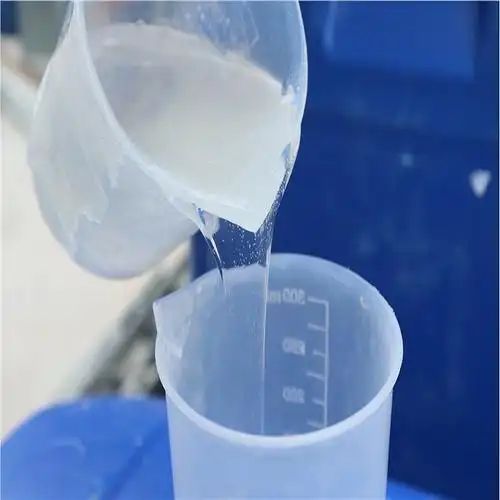Mortar Plasticizers Market Research 2025 Trends
Thursday,16 Jan,2025
What is a mortar plasticizer?
Mortar Plasticiser is a chemical added to mortar to improve its flow, plasticity and bonding properties. It makes the mortar easier to work with and reduces the amount of water used, thus increasing the strength and durability of the mortar.
Mortar plasticizers are usually divided into two main categories: chemical plasticizers and natural plasticizers.
Chemical plasticizers include:
Polycarboxylate Ethers (PCE): provide efficient dispersion and water reduction and are widely used in high performance concrete and mortar.
Naphthalene sulfonates: early water reducers, but gradually replaced by new plasticizers due to environmental concerns.
Lignosulfonates: extracted from the by-products of the pulp industry, providing good dispersion but low water reduction efficiency.
Natural plasticizers are usually included:
Clays: used in traditional mortar plasticizing.
Plant extracts: such as corn starch and molasses, provide some plasticizing effect but are less commonly used.
Applications of mortar plasticizers.
Construction industry: used in masonry mortar, plastering mortar and repair mortar to improve construction efficiency and quality.
Infrastructure construction: Used in concrete and mortar for large projects such as bridges, roads and tunnels to ensure structural durability.
Home decoration market: in interior decoration, such as wall plastering and tile adhesion, to enhance adhesion and aesthetics.

Global Market Development
Asia Pacific region is dominated by China and India as the key drivers of mortar plasticizers market due to rapid growth in urbanization and infrastructure investments. According to the industry report, Asia-Pacific accounted for about 45.80% share of the global market in 2023 and is expected to maintain its leading position in the future.
The European market is focusing on environmental protection and sustainability, leading to an increase in the demand for low VOC (Volatile Organic Compounds) plasticizers. The European market is projected to reach 20% market share by 2023, emphasizing on the development of high performance products. The U.S. and Canada market focuses on product quality and technological innovations and is estimated to reach a market size of USD 1.7 billion by 2023, with growth mainly driven by new construction and maintenance projects.
The Middle East and Africa, although the market size is small at present, the market is expected to grow in the coming years with the implementation of infrastructure projects such as Dubai Expo.
According to the latest market analysis, the global mortar plasticizers market is estimated to be valued at USD 2,201 million in 2024 and is projected to reach USD 3,219 million by 2031, growing at a CAGR of 5.7% during the forecast period of 2025-2031. The growth is mainly due to the continuous development of the construction industry and increasing demand for efficient and environmentally friendly materials. (Source: Mortar Plasticiser Market, Global Outlook and Forecast 2024-2030 )
Case Studies
Central Reclamation Project, Hong Kong
The construction team used polycarboxylate ether plasticizers in the Central Reclamation Project in Hong Kong. The project required a high-strength, durable concrete structure. The application of plasticizers significantly reduced the amount of cement used and enhanced the pumpability and compressive strength of the concrete. This not only saved costs, but also improved the overall quality and speed of the project.
Mumbai Metro Construction, India
Lignosulfonate plasticizers were used on the Mumbai Metro project to cope with the high temperatures and humidity in the area. The plasticizers helped to maintain the fluidity and workability of the concrete, reducing the problem of concrete cracks caused by climatic factors during construction.
Expert Opinion
John Smith, Building Materials Scientist: “The choice of mortar plasticizers should be based not only on cost and performance, but also on their stability in specific environments and their environmental friendliness. The trend of the future will be towards more environmentally friendly, high performance plasticizers.”
Dr. Li Wei, Professor of Chemical Engineering: “In the Asian market, especially in fast growing regions like China, the demand for plasticizers will continue to increase in the coming years. Innovations are needed to meet this dual demand for market expansion and sustainable development.”
Q&A.
What are the main types of mortar plasticizers?
The main types include polycarboxylic ethers, naphthalene sulfonates and lignosulfonates.In which sectors are mortar plasticizers most widely used?
Construction, infrastructure development and home improvement markets.
Why does Asia Pacific dominate the mortar plasticizers market?
Asia Pacific, especially China and India, has a high demand for plasticizers due to rapid urbanization and infrastructure development.
What are the future growth trends in the mortar plasticizers market?
As per the forecast, the market is expected to grow at a CAGR of around 5.7%, mainly due to the growth of the construction industry and demand for sustainable materials.
How do you evaluate the effectiveness of mortar plasticizers in real projects?
Real-world application examples have shown that plasticizers can significantly improve the workability and structural durability of mortars, reducing costs and environmental impact.

